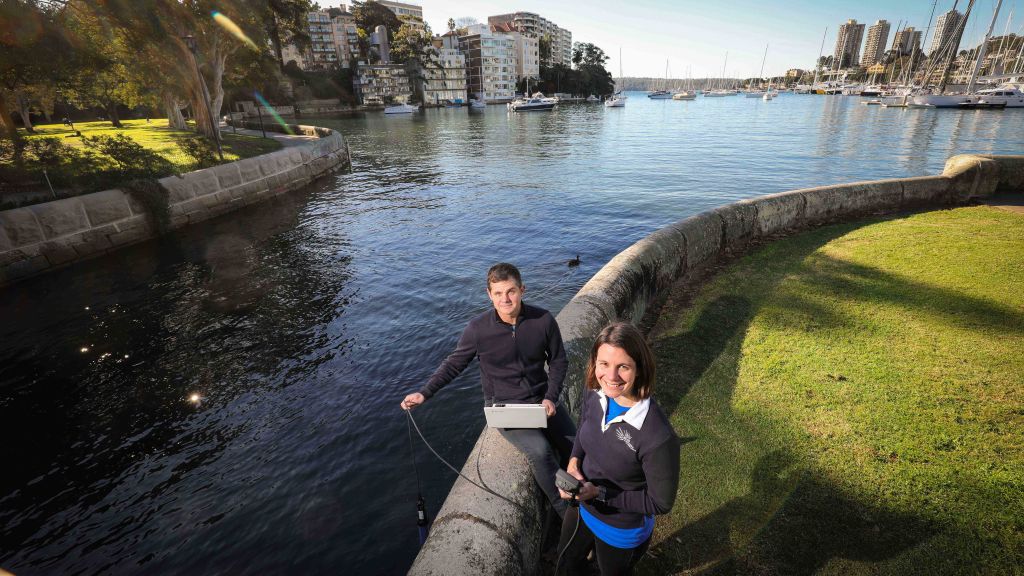A pioneering program to reintroduce native creatures such as shrimps, clams and worms into Sydney Harbour could help reduce stormwater pollution of the iconic waterway.
The simple and cost effective solution will see native sea creatures returned to the seabed to revive a lost ecosystem of burrowing creatures that naturally remove contaminants.
The program is just one of several innovative research initiatives to receive funding from the City of Sydney.
In all, 15 programs will collectively receive more than $130,000 in grants over the next 12 months to address environmental issues and help reduce energy, water and waste pressures.
Lord Mayor Clover Moore said the City was committed to supporting programs dedicated to solving Sydney’s environmental challenges.
“Globally we are seeing the devastating impact of climate change every day, but there are people committed to taking real action and making a difference,” the Lord Mayor said.
“This inventive solution from the Sydney Institute of Marine Science is an inspiring project that has the potential to reinvigorate our harbour’s ecosystem and reduce the effects of man-made pollution.
“I’m proud we are able to support these important initiatives through our grants program, and enable residents, businesses and organisations to work with us to keep our city’s environment clean and sustainable.”
Sydney Institute of Marine Science and The University of Sydney researcher and project leader, Dr Ana Bugnot, aims to place colonies of ghost shrimp and carpet shell clams at stormwater drain outlets around Sydney Harbour.
The bioturbators, or burrowing animals, naturally remediate harmful pollutants retained in the sediment that enters the water from stormwater runoff. Dr Bugnot has selected three outfalls at Rushcutters Bay Park, Blackwattle Bay and Elizabeth Bay for the new trial.
Dr Bugnot says the small sea creatures could have a big impact on improving the health of Sydney Harbour.
“It’s hoped this simple solution will see local sea animals do all the hard work and require no maintenance,” Ms Bugnot explained.
“As they burrow and feed, the bioturbators oxygenate the soft seabed sediment and process contaminants that come down through the stormwater drain, the main source of contamination in Sydney Harbour.
“Centuries of human use of the harbour have degraded these species and many have disappeared from the area. We’ll collect animals from nearby waterways and reintroduce them into the harbour.
“We have done tests in the lab, but carrying out this field study under real conditions is a vital step in our efforts to study the impact of bioturbators on pollution levels, measure the results and record the data.”
Director of the Sydney Harbour Research Program at the Sydney Institute of Marine Science, and Associate Professor of Marine Ecology at the University of New South Wales, Paul Gribben, said the research will potentially help cities around the world combat water pollution.
“Until now, getting rid of a contaminated seabed has involved a massive dredging process and soil replacement, which is both costly and time consuming,” Professor Gribben said.
“This research has the great potential to improve current practices as we investigate more cost effective natural alternatives and provide invaluable data that will be shared and used by scientists around the world.”
The City of Sydney awarded $20,000 towards the Sydney Institute of Marine Science feasibility study. Other environmental program funding from the City includes:
- A $6,000 grant to a local social enterprise, Kua, delivering fresh coffee beans to office workers and collecting the spent grounds for use in compost and community gardens. The initiative also supports Cent for Seeds, a program to help Ugandan women become self-sufficient coffee farmers.
- A $20,000 grant supporting the transformation of a city office block rooftop at 2 Market Street, Sydney, into an urban farm and green space. The innovative project will capture data on the economic, social and ecological impact of the new inner-city green space.
- A $5,000 grant to UNSW investigating walkability in Sydney using smartphone data to map noise and greenery to better understand and manage the environmental performance of the city.
- Eleven grants totalling $80,000 to building owners and facility managers to identify and implement environmental efficiency opportunities and building performance ratings for energy, water and waste.
For media inquiries or images, contact Belinda Wallis. Phone 0467 810 160 or email bwallis@cityofsydney.nsw.gov.au
For interviews with Lord Mayor Clover Moore, contact Julia Lenton. Phone 0410 748 039 or email jlenton@cityofsydney.nsw.gov.au
